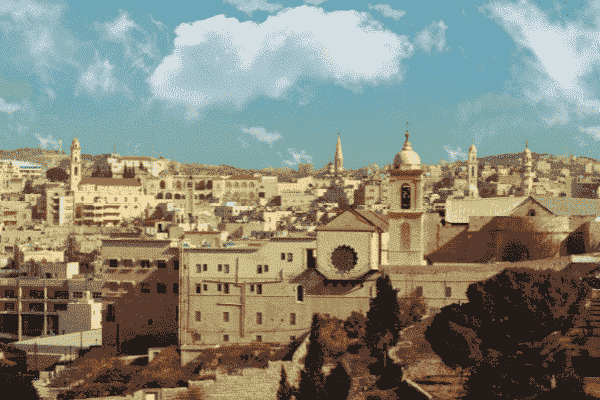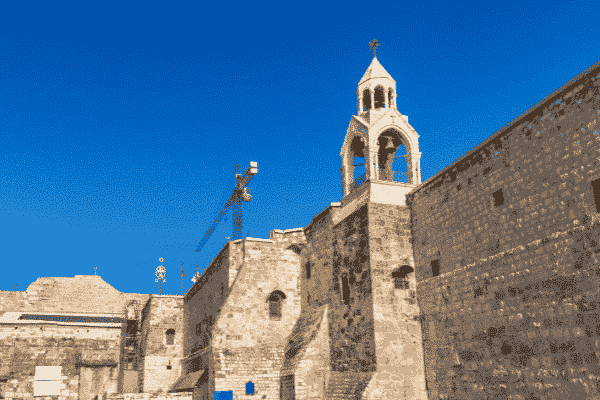What do you think about when it comes to Christmas? Many people think of gifts, decorations, family, a rich lunch. Few think of the less fortunate, of the demonstrations of solidarity and of moments of communion.
Even less, however, think of the place where everything originated: Bethlehem. With the Basilica of the Nativity, the Milk Cave and the Star Way, the city offers visitors the unique experience of seeing with their own eyes where Jesus was born more than two thousand years ago.
Bethlehem meaning
The origin of the name Bethlehem is curious, it seems to derive from that of a pagan deity, as "house (beit, bet), of Lachamu", the god of war and food. In Hebrew Bet Lechem is translatable as "bread house" or "battle house". What do these two elements have in common? Originally the term Bethlehem would seem to refer to the most ancient eras when wars were widespread in this area and were wars for survival, precisely for bread. The Arabic name of the city is translatable as "house of meat", Beit (house) Lahm (meat).
Where is Bethlehem and how to get there
Bethlehem is located in the West Bank, about 10 km from Jerusalem, just under half an hour's drive. In fact, despite the fact that the two cities are very close, a separation wall 11 meters high and 150 km long, with turrets and control points, makes the move tedious.
Built in 2002 to coincide with the Israeli army's siege of the Basilica of the Nativity complex, the wall separates the Palestinian territories of the West Bank from Israel.
Today it is also a great work of art outdoors: reinforced concrete has become a blank canvas for street artists protesting against apartheid. Among these also the famous Banksy who here has created some of his most iconic works.
Tourists and pilgrims, however, will have no difficulty in visiting the christmas city: public transport to and from Jerusalem is numerous and frequent. Just remember to always carry your passport with you as you are crossing a military border.

Ancient Bethlehem and today's Bethlehem
And you, Bethlehem of Ephrata so small to be among the capitals of Judah, from you will come forth he who must be the ruler in Israel; its origins are from antiquity, from the most remote days.
Micah 5
The history of this city is lost in time. Ancient sources, however, attest to its existence as early as 1400 BC.C., in the Bronze Age, and the Bible links it to the very important figure of David. Jesus then, as reported in the Gospels, is a direct descendant of the shepherd boy who defeats Goliath and becomes king.
In Roman times, at the time of Christ (first century of .C.), Bethlehem was part of the region of Judea ruled by Herod Archelaus, son of Herod the Great and from 6 .C. - after the dismissal of Archelaus - ruled by the Prefect of Judea, Pontius Pilate.
Today there are about 30,000 fellow citizens of Jesus. Of these, just under half are Christians even though until 1947 they were the majority of the population. The municipality of Bethlehem is home to 3 Palestinian refugee camps, inhabited largely by Muslims and representing a third of the total population. They come from the surrounding villages displaced in 1948 with the birth of the State of Israel.
The Christian presence in the place that saw the origin of Salvation, however, remains a constant so much so that, by statute, the mayor must be Christian. On Bethlehem, in short, there are more bell towers than minarets and the Latin community is the most numerous.
The Basilica of the Nativity
Is Jesus born in a cave or in a stable? Both! In ancient times, in fact, the two things often matched: the animals were kept in stables obtained from natural caves on which houses were built.
In this way the animals were kept safe and the heat produced by their breath rose upwards to heat the domestic environments. The cave of the Nativity , venerated as early as the first century of .C., must have seen a scene very similar to the one just described.
It is the heart of the complex of the Basilica of the Nativity, a Constantinian building with five naves dating back to 330 BC.C., one of the oldest in the Holy Land along with the Holy Sepulchre. To access the church shared by Greek Orthodox, Armenian and Latin communities, you will have to pass through the "door of humility", a very low stone portal that will force you to bend down as a sign of respect for the place where Jesus was born.
The fascinating history of the church has been reconstructed thanks to the project " Bethlehem Back in Time ", an accurate study of the various phases of life of the building that has assisted the restoration of the mosaic decorations, the roof and the windows started in 2003 following the inscription of the basilica in the list of UNESCO sites.

Around the basilica: Via della Stella and Dar Al Majus
The places of Bethlehem are certainly not limited to the Church of the Nativity. The manger Square will transport you into the bustling life of the city centre with its many shops, cafes, colourful souks and Arab market.
Continuing along Via della Stella, the oldest of the streets that led pilgrims to the historic center which, according to tradition, follows the path taken by the Three Kings to pay homage to the baby Jesus, you will be spoiled for choice between olive wood and mother-of-pearl souvenirs.
To visit the Shepherds' Field, where the Angel announced the birth of the Lord and the Milk Grotto, where women invoke Our Lady to fight infertility and obtain abundant milk for their children, it will be good to spend the night in Bethlehem.
In the evening the city offers images that are tremendously reminiscent of those of a crib and immersing yourself in the Holy Land at the time of Jesus becomes easy. Guests can find hospitality in the guest houses of Dar Essideh and Dar al Majus, the home of the Three Kings. The latter, in addition to being a small and charming guest house with a large terrace overlooking the square and the basilica, will soon be flanked by our new Community Home, a support center for the local community where pilgrims can immerse themselves in the history of Faith and Salvation that has characterized the city of Bethlehem for over 2000 years.


















